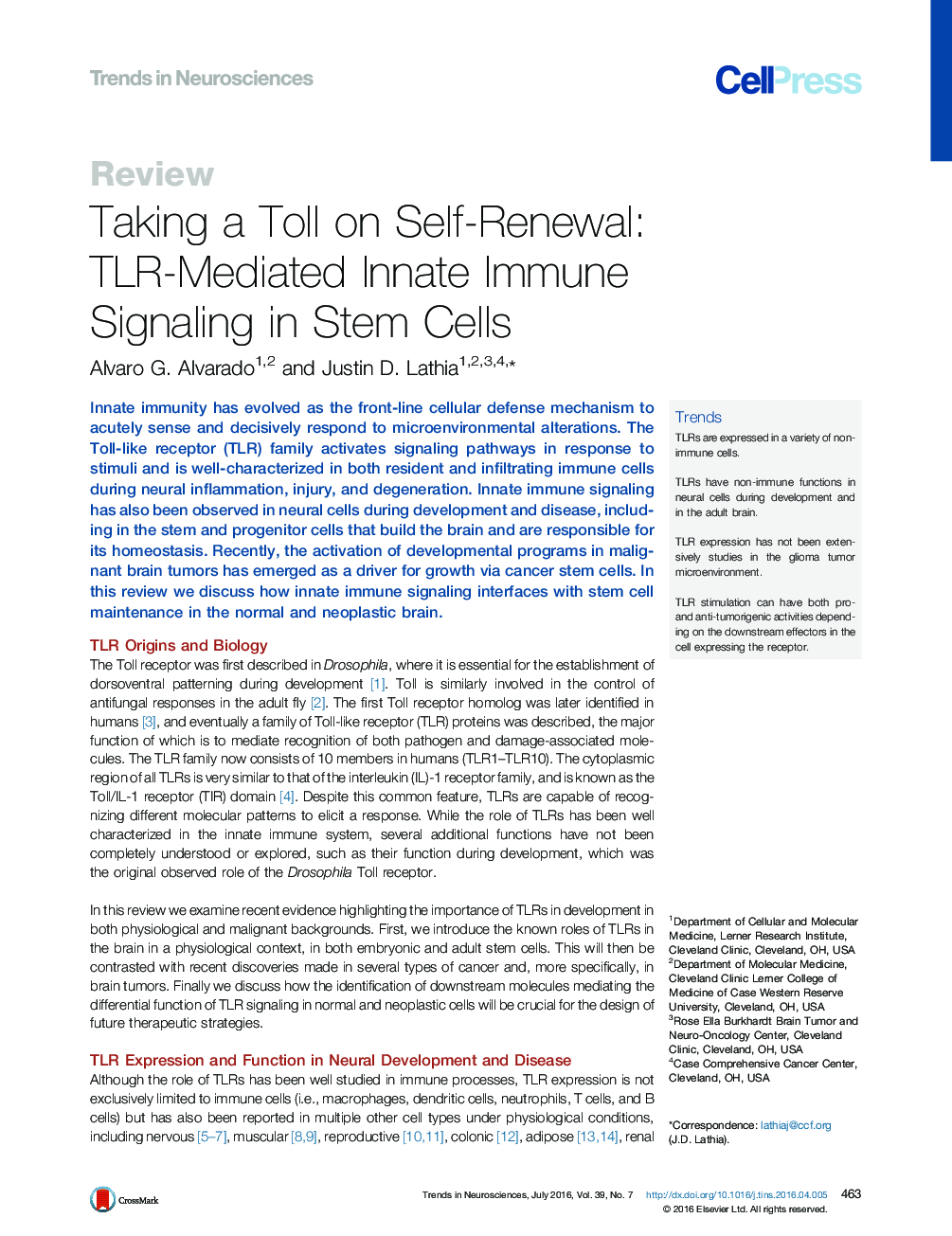| Article ID | Journal | Published Year | Pages | File Type |
|---|---|---|---|---|
| 4354097 | Trends in Neurosciences | 2016 | 9 Pages |
Innate immunity has evolved as the front-line cellular defense mechanism to acutely sense and decisively respond to microenvironmental alterations. The Toll-like receptor (TLR) family activates signaling pathways in response to stimuli and is well-characterized in both resident and infiltrating immune cells during neural inflammation, injury, and degeneration. Innate immune signaling has also been observed in neural cells during development and disease, including in the stem and progenitor cells that build the brain and are responsible for its homeostasis. Recently, the activation of developmental programs in malignant brain tumors has emerged as a driver for growth via cancer stem cells. In this review we discuss how innate immune signaling interfaces with stem cell maintenance in the normal and neoplastic brain.
TrendsTLRs are expressed in a variety of non-immune cells.TLRs have non-immune functions in neural cells during development and in the adult brain.TLR expression has not been extensively studies in the glioma tumor microenvironment.TLR stimulation can have both pro- and anti-tumorigenic activities depending on the downstream effectors in the cell expressing the receptor.
